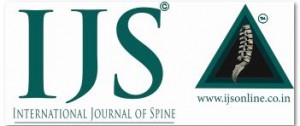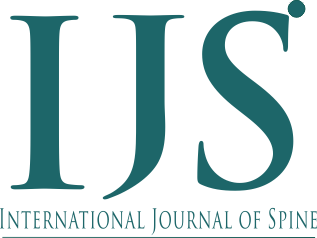Genomics in Spine Health
Volume 4 | Issue 1 | Jan – June 2019 | Page 43-45 | Ketan Khurjekar, Aniket Ausekar, Jyotsna Jotshi
Authors : Ketan Khurjekar [1], Aniket Ausekar [1], Jyotsna Jotshi [1]
[1] Sancheti Institute for Orthopaedics &Rehabilitation, Pune, India
Address of Correspondence
Dr. Ketan Khurjekar,
Sancheti Institute for Orthopaedics &Rehabilitation, Pune, India
Email: kkhurjekar@gmail.com
Abstract
Discovery of the structure of DNA monograph and DNA Sequencing brought a paradigm shift and saw the advent of a new era in science and medicine. Neoplastic conditions are a result of aberrant mutations in protooncogenes or tumor suppressor genes, which control cell signalling and act as checkpoints of various cellular and subcellular processes..
Genomics focuses on structure, function, evolution, mapping, and editing of genomes. The study of genomics deals with the sequencing and analysis of an organism’s genome. It attempts to map the entire genome of an organism and tries to distinguish between the genetic markers to see which one deal with what traits. An area which has seen a tremendous advancement as a result of molecular genomics is oncology. Spinal metastasis is one of the leading causes of morbidity in cancer patients. Spine being the third most common site for cancer cells to metastasize and are generally indicative of a late stage malignancy. Application of molecular biology and genetics to better understand and hence treat vertebral neoplastic conditions is shrinking the gap between diagnosis and mortality.
Case Study- A 42 year-old male with Tuberculosis of spine (advance stage IV NSCLC with spinal cord metastasis and primary lung adenocarcinoma ) This case is a representation of result of targeted therapy regimen for the driver mutation responsible for prolific adenocarcinoma of lung and its metastasis.
Conclusion- Surgery, chemotherapy and Radiotherapy cannot be replaced but can be directed with more efficacy with genomic guidance.
Keywords: DNA sequencing, genomics, Spinal metastasis.
References
1. Shendure J, Balasubramanian S, Church GM, Gilbert W, Rogers J, Schloss JA and Waterston RH. DNA sequencing at 40: past, present and future. Nature 2017; 550(7676): 345–353.
2. Jerjes W, Upile T, Petrie A, Riskalla A, Hamdoon Z, Vourvachis M, Karavidas K, Jay A, Sandison A, Thomas GJ, Kalavrezos N and Hopper C. Clinicopathological parameters, recurrence, locoregional and distant metastasis in 115 T1-T2 oral squamous cell carcinoma patients. Head Neck Oncol 2010;2:9
3. Byers P. The role of genomics in medicine―past, present and future. J Zhejiang Univ Sci B. 2006; 7(2): 159–160.
4. Ferlay J, Soerjomataram I, Ervik M, Dikshit R, Eser S, Mathers C, Rebelo M, Parkin DM, Forman D and Bray F. Cancer incidence and mortality worldwide: sources, methods and major patterns in GLOBOCAN 2012. Int J Cancer 2015;136(5):E359-86
5. Shah LS and Salzman KL. Imaging of Spinal Metastatic Disease. Int J Surg Oncol 2011;769753.
6. Ebert C, von Haken M, Meyer-Puttlitz B, Wiestler OD, Reifenberger G, Pietsch T, von Deimling A. Molecular genetic analysis of ependymal tumors. NF2 mutations and chromosome 22q loss occur preferentially in intramedullary spinal ependymomas. Am J Pathol 1999;155(2):627-32
7. Zarghooni M, Bartels U, Lee E, Buczkowicz P, Morrison A, Huang A, Bouffet E, and Hawkins C. Whole-Genome profiling of pediatric diffuse intrinsic pontine gliomas highlights platelet-derived growth factor receptor α and poly (ADP-ribose) polymerase as potential therapeutic targets. J Clin Oncol 2010;28:8, 1337-1344
8. Hawkins C, Walker C, Mohamed N, Zhang C, Jacob K, Shirinian M, Alon N, Kahn D, Fried I, Scheinemann K, Tsangaris E, Dirks P, Tressler R, Bouffet E, Jabado N and U Tabori. BRAF-KIAA1549 Fusion Predicts Better Clinical Outcome in Pediatric Low-Grade Astrocytoma. Clin Cancer Res 2011;17 (14): 4790-8
9. Liang X, Wang D, Wang Y, Zhou Z, Zhang J and Li J. Expression of Aurora Kinase A and B in chondrosarcoma and its relationship with the prognosis. Diagn Pathol 2012;7:84
10. Dea N, Gokaslan Z, Choi D, Fisher C. Spine Oncology – Primary Spine Tumors. Neurosurgery 2017;80(3S): S124–S130.
11. Massacesi C, Di Tomaso E, Urban P, Germa C, Quadt C, Trandafir L, Aimone P, Fretault N, Dharan B, Tavorath R and Hirawat S. PI3K inhibitors as new cancer therapeutics: implications for clinical trial design Onco Targets Ther2016; 9:203-10.
12. Lu C, Wu J, Wang H, Wang S, Diao N, Wang F, Gao Y, Chen J, Shao L, Weng X, Zhang Y, Zhang W. Novel biomarkers distinguishing active tuberculosis from latent infection identified by gene expression profile of peripheral blood mononuclear cells. PLoS One 2011;6(8)
13. Niu N, Wang Q, Shi J, Zhang X, Geng G, Zhou S, Thach C, Cheng F and Wang Z. Clinical and genomic responses to ultra-short course chemotherapy in spinal tuberculosis. Exp Ther Med 2017;13(5): 1681–1688.
14. Witney AA, Gould KA, Arnold A, Coleman D, Delgado R, Dhillon J, Pond MJ, Pope CF, Planche TD, Stoker NG, Cosgrove CA, Butcher PD, Harrison TS and Hinds J. Clinical application of whole-genome sequencing to inform treatment for multidrug-resistant tuberculosis cases. J Clin Microbiol 2015;53:1473–1483.
| How to Cite this Article: Khurjekar K, Ausekar A, Jotshi J. Confluence of mainstream clinical practices and advanced genomic technologies: Advent of Genomic Medicine. International Journal of Spine Jan-June 2019;4(1):43-45. |



